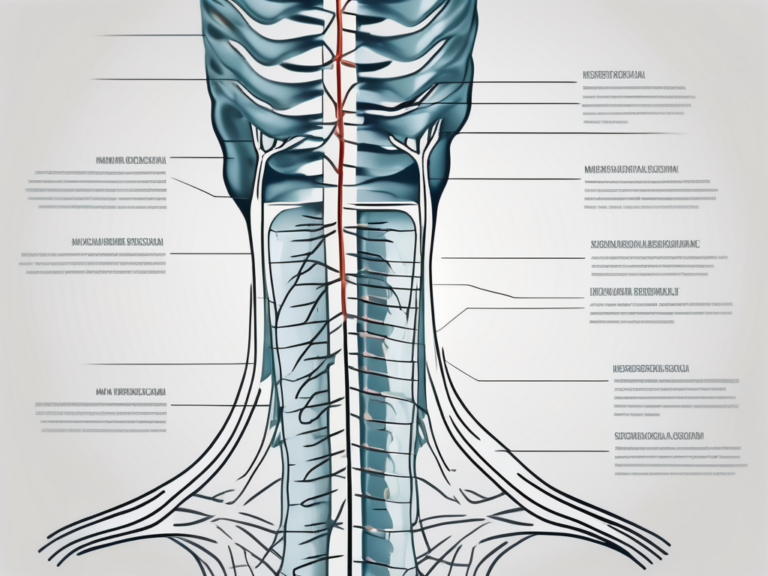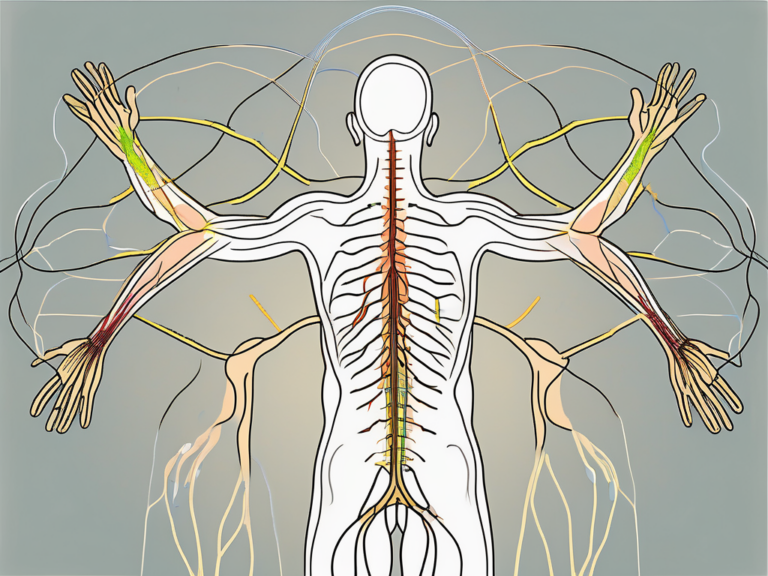How Much Does Sacral Nerve Stimulation Cost?
Sacral nerve stimulation is a medical procedure that can provide relief for individuals who suffer from certain bladder and bowel disorders. However, before considering this treatment option, it’s crucial to understand the potential costs involved. In this article, we will explore the various factors that influence the cost of sacral nerve stimulation, available financial assistance and payment plans, as well as the long-term financial implications.
Understanding Sacral Nerve Stimulation
Sacral nerve stimulation, also known as sacral neuromodulation, involves the implantation of a device that sends mild electrical pulses to the sacral nerves in the lower back. These nerves play a significant role in controlling bladder and bowel functions. By modulating the nerve activity, sacral nerve stimulation can help manage conditions such as overactive bladder, urinary incontinence, fecal incontinence, and urinary retention.
The sacral nerves, located at the base of the spine, are responsible for transmitting signals between the brain and the bladder and bowel muscles. When these nerves are not functioning properly, it can lead to a range of issues, including loss of bladder or bowel control.
Sacral nerve stimulation is a minimally invasive procedure that is typically recommended for patients who have not responded to more conservative treatments. It is considered a second-line therapy, used when other options like medications and behavioral therapies have not provided sufficient relief.
What is Sacral Nerve Stimulation?
Sacral nerve stimulation is a procedure that aims to restore normal nerve function by delivering electrical impulses to the sacral nerves. During the procedure, a small device, similar to a pacemaker, is implanted near the sacral nerves. The device is connected to thin wires, called leads, which are placed near the nerves. These leads deliver the electrical pulses to the nerves, helping to regulate their activity.
The electrical pulses delivered by the device are carefully calibrated to ensure they are at a level that is comfortable for the patient. The intensity and frequency of the pulses can be adjusted by the healthcare provider to achieve the desired therapeutic effect.
The procedure to implant the sacral nerve stimulation device is typically performed under local anesthesia. The device is placed under the skin, usually in the buttock area, and the leads are inserted through small incisions. The incisions are then closed, and the device is programmed to deliver the appropriate electrical pulses.
The Medical Benefits of Sacral Nerve Stimulation
Sacral nerve stimulation has been shown to be effective in improving bladder and bowel control, reducing the frequency of accidents, and providing relief from associated symptoms such as urgency and the need for frequent bathroom visits. It can significantly enhance the quality of life for individuals who have been struggling with these conditions.
Research studies have demonstrated the long-term effectiveness of sacral nerve stimulation in managing overactive bladder and urinary incontinence. Patients who have undergone this procedure have reported significant improvements in their symptoms, leading to a reduction in the need for medications and pads.
In addition to its benefits in managing bladder and bowel conditions, sacral nerve stimulation has also shown promise in other areas of healthcare. It has been explored as a potential treatment for chronic pelvic pain, interstitial cystitis, and even sexual dysfunction.
While sacral nerve stimulation can be a life-changing treatment for many patients, it is important to note that it may not be suitable for everyone. The decision to undergo this procedure should be made in consultation with a healthcare provider who can assess the individual’s specific condition and determine the most appropriate treatment plan.
The Cost Breakdown of Sacral Nerve Stimulation
When considering sacral nerve stimulation, it’s important to be aware of the different cost components involved in the procedure.
Sacral nerve stimulation is a medical treatment that involves the use of a device to stimulate the sacral nerves, which are located near the lower back. This treatment is commonly used for conditions such as overactive bladder, urinary retention, and fecal incontinence.
Initial Consultation and Diagnosis Costs
A thorough evaluation by a urologist or urogynecologist is typically the first step in determining whether sacral nerve stimulation is an appropriate treatment option. During the initial consultation, the healthcare provider will review the patient’s medical history, perform a physical examination, and may order diagnostic tests and evaluations.
The cost of initial consultations can vary depending on the healthcare provider and location. Some healthcare providers may offer package deals that include the cost of diagnostic tests and evaluations, while others may charge separately for each service.
It’s important for patients to discuss the cost of the initial consultation and diagnosis with their healthcare provider and insurance company to understand what is covered and what may need to be paid out-of-pocket.
Surgery and Equipment Costs
The surgical implantation of the sacral nerve stimulation device is usually performed under anesthesia. This surgical procedure involves making incisions in the lower back and placing the device near the sacral nerves.
The overall cost of the surgery includes several components. First, there are the surgeon’s fees, which cover the cost of the surgeon’s time and expertise. Anesthesia charges are also included, as the patient will be under anesthesia during the procedure.
In addition to the surgical fees and anesthesia charges, the cost of the sacral nerve stimulation device itself should be considered. The device is typically made up of a small generator, which is implanted under the skin, and leads, which are placed near the sacral nerves. The cost of the device can vary depending on the brand and model chosen.
Patients should consult with their healthcare provider and insurance company to understand the specific costs associated with the surgery and the device. Some insurance companies may cover a portion or all of the cost, while others may require prior authorization or have specific criteria that must be met.
Post-Operative Care and Follow-Up Costs
Following the surgery, patients may require post-operative care to ensure proper healing and optimal functioning of the sacral nerve stimulation device.
This post-operative care may include follow-up visits with the healthcare provider to monitor the patient’s progress, make any necessary adjustments to the device settings, and address any concerns or complications that may arise.
In addition to the cost of follow-up visits, patients may also need to budget for medication that may be prescribed to manage pain or prevent infection. The cost of these medications can vary depending on the type and dosage prescribed.
It’s important for patients to discuss the expected post-operative care and follow-up costs with their healthcare provider and insurance company. Some insurance plans may cover a certain number of follow-up visits or a portion of the medication costs, while others may require the patient to pay out-of-pocket.
Overall, when evaluating the cost of sacral nerve stimulation, it’s important to consider not only the initial consultation and diagnosis costs, but also the surgery and equipment costs, as well as the post-operative care and follow-up costs. By understanding these different cost components, patients can make informed decisions about their treatment options and budget accordingly.
Factors Influencing the Cost of Sacral Nerve Stimulation
Various factors can influence the cost of sacral nerve stimulation, and it’s essential to understand these influences when estimating the potential expenses.
Sacral nerve stimulation is a medical procedure that involves the implantation of a device to stimulate the sacral nerves, which are responsible for controlling the bladder and bowel function. This treatment option is often recommended for individuals with certain medical conditions, such as overactive bladder, urinary incontinence, or fecal incontinence.
Geographic Location and Cost Variations
The cost of sacral nerve stimulation can vary significantly depending on the healthcare market in a particular region or country. Factors such as local medical costs, healthcare facility fees, and regional economic disparities can affect the overall price.
For example, in countries with a higher cost of living and higher healthcare expenses, the cost of sacral nerve stimulation may be more expensive compared to countries with lower healthcare costs. Additionally, within a country, there may be variations in cost between different cities or regions.
It’s important to consider these geographic cost variations when estimating the potential expenses associated with sacral nerve stimulation. Consulting with healthcare providers in different locations or seeking cost estimates from multiple healthcare facilities can help you make an informed decision.
Specialist’s Experience and Reputation
The experience and reputation of the surgeon performing the procedure can impact the cost. Highly skilled and experienced specialists may charge higher fees for their services.
When it comes to a complex procedure like sacral nerve stimulation, it’s crucial to choose a surgeon who has extensive experience and a proven track record in performing the surgery. Surgeons with a high level of expertise may have a higher demand for their services, which can translate into higher costs.
However, it’s important to note that the cost should not be the sole determining factor when selecting a surgeon. The surgeon’s qualifications, experience, and patient outcomes should also be taken into consideration to ensure the best possible results.
Insurance Coverage and Out-of-Pocket Expenses
Insurance coverage for sacral nerve stimulation can vary depending on the insurance provider and policy. Some insurance plans may cover the procedure partially or entirely, while others may have limitations or exclusions.
Before undergoing sacral nerve stimulation, it’s crucial to review your insurance policy and understand the coverage details. This includes checking if the procedure is covered, what percentage of the cost is covered, and if there are any pre-authorization requirements or specific healthcare providers that must be used.
In addition to insurance coverage, it’s important to consider potential out-of-pocket expenses. These can include deductibles, co-pays, and any costs that are not covered by insurance. Understanding your cost-sharing responsibilities can help you plan for the financial aspect of the procedure.
It’s advisable to consult with your healthcare provider and insurance company to get a clear understanding of the potential out-of-pocket expenses associated with sacral nerve stimulation. They can provide you with a breakdown of the costs and help you navigate the insurance process.
Financial Assistance and Payment Plans for Sacral Nerve Stimulation
For individuals concerned about the financial implications of sacral nerve stimulation, several options may help alleviate the burden of costs.
When it comes to medical procedures like sacral nerve stimulation, the costs can often be a major concern for patients. However, there are various avenues available to help individuals manage these expenses and make the procedure more affordable.
Health Insurance and Medicare Coverage
Contacting your health insurance provider is an essential first step in understanding the coverage they offer for sacral nerve stimulation. Health insurance plans can vary significantly, so it’s crucial to determine what services and procedures are included in your specific plan.
Medicare, a federal health insurance program primarily for individuals aged 65 and older, may also provide coverage for sacral nerve stimulation. However, it’s important to note that eligibility requirements and coverage limitations may apply. It’s advisable to reach out to Medicare directly or consult with a healthcare professional to understand the specific requirements and any potential prior authorization or documentation needed.
Hospital Payment Plans and Financing Options
Many hospitals and healthcare facilities understand the financial strain that medical procedures can place on patients. To assist individuals in managing the cost of sacral nerve stimulation, these institutions often offer payment plans and financing options.
Payment plans allow patients to spread out the cost of the procedure over time, making it more manageable. By breaking down the total expense into smaller monthly installments, individuals can receive the necessary treatment without experiencing a significant financial burden all at once.
In addition to payment plans, hospitals may also offer financing options. These options can include low-interest loans or partnerships with financial institutions that specialize in medical financing. Exploring these possibilities can help patients find a solution that suits their financial needs and allows them to proceed with sacral nerve stimulation.
Non-Profit Organizations and Grants for Medical Procedures
For individuals who are in need of financial assistance for sacral nerve stimulation, there are non-profit organizations that may be able to help. These organizations are dedicated to supporting individuals in need of medical procedures and often offer grants or other forms of financial aid.
By providing financial assistance, these non-profit organizations aim to alleviate the burden of medical expenses and ensure that individuals can receive the necessary treatment without facing significant financial hardship.
It’s important to research and reach out to these organizations to understand the specific criteria for eligibility and the application process. Each organization may have different requirements and funding availability, so it’s advisable to explore multiple options to increase the chances of receiving financial assistance.
In conclusion, while the financial implications of sacral nerve stimulation can be a concern, there are various avenues available to help individuals manage the costs. Exploring health insurance coverage, hospital payment plans, and non-profit organizations can provide the necessary support to make the procedure more affordable and accessible.
The Long-Term Financial Implications of Sacral Nerve Stimulation
When considering sacral nerve stimulation as a treatment option, it is important to take into account the potential long-term costs associated with this procedure. While the initial investment may seem significant, it is crucial to evaluate the financial implications over time.
Maintenance and Replacement Costs
Over the course of using a sacral nerve stimulation device, there may be a need for maintenance or replacement. This can include battery replacements or adjustments to the device settings. It is important to factor in these ongoing costs when planning for the long-term financial impact of sacral nerve stimulation.
The Cost-Benefit Analysis of Sacral Nerve Stimulation
When evaluating the cost of sacral nerve stimulation, it is crucial to consider the potential benefits and improvements in quality of life. The long-term relief and reduction in healthcare costs associated with managing bladder and bowel conditions may outweigh the initial investment. It is important to weigh the potential financial burden against the potential long-term benefits.
Comparing Sacral Nerve Stimulation Costs to Alternative Treatments
Before deciding on sacral nerve stimulation, it may be helpful to compare the costs of this treatment to alternative options. This can include evaluating the expenses associated with medications, physical therapy, or other procedures that aim to address bladder and bowel disorders. Consulting with a healthcare professional can provide valuable insights into these alternatives and help make an informed decision.
Exploring Available Resources
It is important to note that the cost of sacral nerve stimulation will depend on various factors. Consulting with a qualified healthcare provider is crucial in understanding the potential financial implications and exploring available resources. They can provide personalized recommendations and help navigate the financial aspect of this treatment, including potential insurance coverage or financial assistance programs.
By carefully considering and exploring available resources, individuals can make informed decisions regarding their healthcare and find potential solutions to alleviate the financial burden associated with sacral nerve stimulation. It is essential to prioritize both the long-term health benefits and the financial implications when considering this treatment option.





